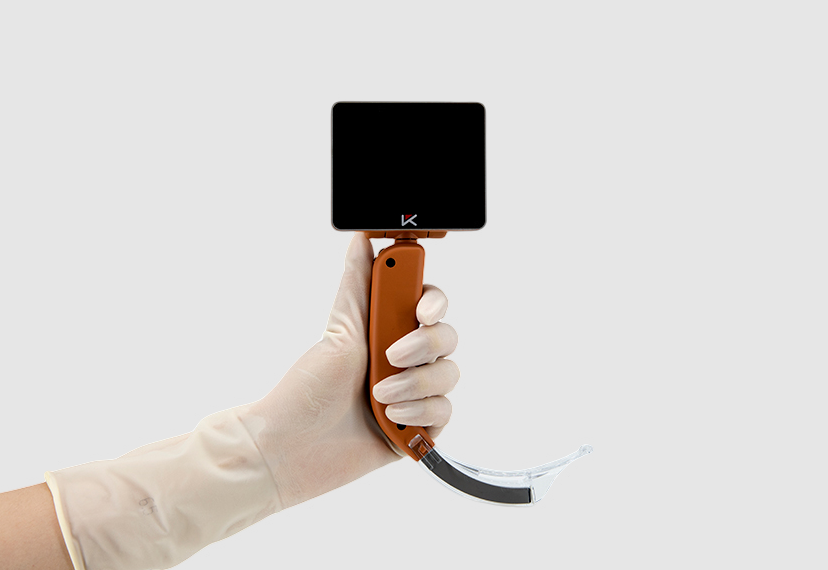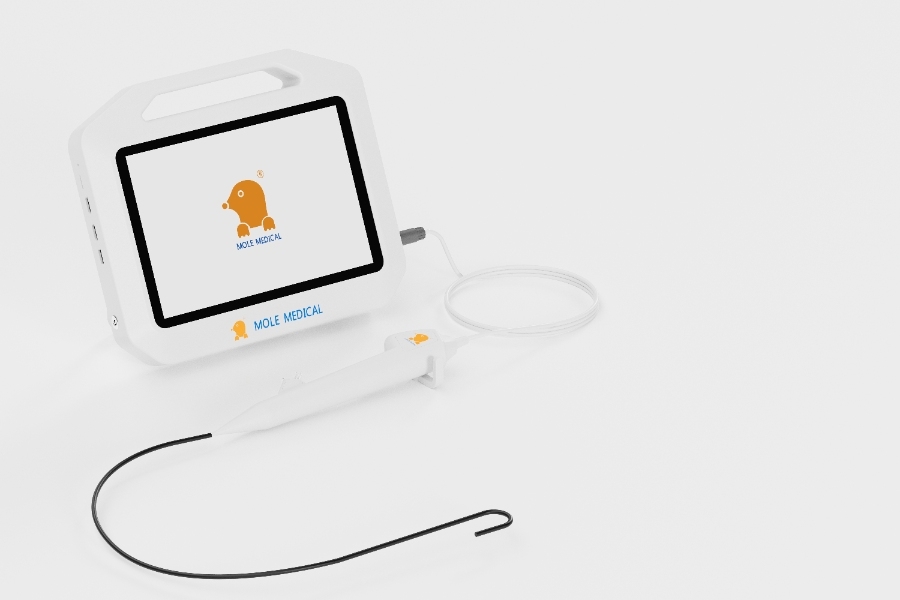Video Laryngoscope Types: A Detailed Comparison for Improved Airway Visualization
Oct 15, 2024
Have you ever wondered what makes certain video laryngoscopes more suitable for pediatric intubation while others excel in adult airway management? The rapid advancement of medical technology has led to the development of a wide range of video laryngoscopes, each designed to address the specific challenges faced by healthcare providers in various clinical settings. In this blog, we’ll delve into the different types of video laryngoscopes available and how they cater to distinct patient needs, with a special focus on pediatric and adult intubation.

The Role of Various Video Laryngoscope Types in Difficult Airway Management
Video laryngoscopes have transformed airway management, providing enhanced visualization and improving intubation success rates, particularly in difficult airways. When facing complex cases, such as patients with restricted neck mobility, anatomical anomalies, or trauma, the choice of laryngoscope type can significantly impact the outcome of the procedure.
Advanced Visualization for Complex Cases
Modern video laryngoscopes offer high-definition cameras and superior lighting systems, allowing clinicians to clearly visualize the vocal cords and surrounding structures. This feature is particularly valuable in difficult intubations, where direct visualization is challenging. Unlike traditional laryngoscopes that rely on line-of-sight views, video laryngoscopes provide a magnified and clear view of the airway, reducing the need for excessive manipulation and minimizing the risk of injury.
Tailored Blades for Various Anatomies
The diverse range of blade types available—curved, straight, and hybrid designs—allows healthcare professionals to choose the most appropriate tool based on the patient’s anatomy. For example, a curved blade may be preferred for patients with normal anatomy, while a straight blade can provide better access in those with limited mouth opening. The versatility in blade design enables practitioners to adapt their technique according to the specific airway challenges presented, ensuring optimal outcomes.
Ergonomics and Durability for Repeated Use
The design of video laryngoscopes is not just about visualization; it’s also about maneuverability and control. Ergonomically designed handles provide a secure grip, enabling clinicians to perform precise movements, which is crucial in difficult airway management. Additionally, the materials used in these devices are highly durable, capable of withstanding repeated sterilization and clinical use, making them a reliable choice for high-demand environments such as intensive care units (ICUs) and emergency departments.
Essential Video Laryngoscope Types for Pediatric and Adult Intubation
Intubating pediatric patients poses unique challenges due to their smaller anatomical structures and greater susceptibility to airway trauma. This is where specialized pediatric video laryngoscopes, such as the Pediatric Neonatal Laryngoscope from Mole Medical, come into play. On the other hand, adult patients may require laryngoscopes with different blade sizes and configurations to accommodate their larger airways and varying anatomical considerations.
Pediatric Intubation: Specialized Design for Neonates and Children
The Pediatric Neonatal Laryngoscope is meticulously crafted to cater to the unique anatomical needs of infants and small children. Its compact, lightweight structure and varying blade sizes allow healthcare providers to perform delicate procedures on young patients with greater precision and less invasiveness, leading to a more comfortable experience for the patient.

Enhanced Visualization and Safety Features
Equipped with superior lighting and optical capabilities, the Pediatric Neonatal Laryngoscope offers a clear, unobstructed view of the pediatric airway, making intubations quicker and reducing the likelihood of mucosal damage. The single-use, sterilized blades eliminate the risk of cross-contamination, maintaining high standards of hygiene and patient safety.
Ergonomics and Maneuverability in Tight Spaces
When working in tight spaces, the Mole Display’s screen can be angled up to 70 degrees, allowing for optimal positioning of the laryngoscope blade while maintaining the established intubation technique. This flexibility is crucial in pediatric settings, where space is often limited and careful maneuvering is essential.
Durability and Reusability
Constructed with durable materials, the Pediatric Neonatal Laryngoscope withstands repeated sterilization and use, making it not only reliable but also cost-effective over time. This durability ensures that the device remains a dependable tool in high-frequency environments like the NICU (Neonatal Intensive Care Unit).
Adult Intubation: Versatile Options for Routine and Emergency Use
Adult intubation often involves managing a wide range of airway conditions, from routine anesthesia procedures to emergency cases. Video laryngoscopes designed for adult use offer features such as different blade sizes, enhanced ergonomic handles, and real-time video feedback, making them ideal for a variety of clinical situations.

Varied Blade Sizes for Comprehensive Coverage
Adult video laryngoscopes come with a variety of blade sizes, typically ranging from sizes 2 to 5, to accommodate patients with different anatomical profiles. For example, size 5 blades are suitable for larger adults or patients with difficult airways, while smaller sizes can be used for standard cases or those with restricted mouth openings.
Real-Time Video Guidance
The ability to view the intubation process on a monitor in real-time not only enhances the clinician’s ability to navigate challenging airways but also serves as a valuable teaching tool for medical trainees. This feature is particularly beneficial in the anesthesia and emergency departments, where quick and accurate decision-making is crucial.
Cross-Departmental Application
Adult video laryngoscopes find application in various departments, including the ICU, NICU (for transitional cases), respiration, and emergency units. Their versatility makes them indispensable tools for airway management across multiple specialties.
Understanding the Types of Video Laryngoscopes: Choosing the Best for Your Team
With so many video laryngoscope types available, choosing the right one for your medical team can be daunting. Factors such as patient population, common clinical scenarios, and budget all play a role in determining which laryngoscope type is most suitable.
Direct vs. Indirect Visualization
The primary distinction among video laryngoscopes lies in whether they offer direct or indirect visualization. Direct visualization types require the clinician to align their line of sight with the patient’s airway, similar to traditional laryngoscopes. Indirect visualization, on the other hand, allows the practitioner to view the airway on a screen, which is particularly useful for teaching and for cases where a clear view is not possible due to anatomical or positional challenges.
Single-Use vs. Reusable Blades
Single-use blades are ideal for reducing the risk of cross-contamination, especially in high-turnover environments like emergency rooms. Reusable blades, however, can be more cost-effective over time and are favored in settings where strict sterilization protocols are in place.
Pediatric vs. Adult Laryngoscopes
Pediatric laryngoscopes, such as the specialized designs offered by Mole Medical, are smaller and lighter, with features tailored to reduce trauma in young patients. Adult laryngoscopes, in contrast, are larger and more robust, with blade sizes and handle designs that cater to the unique requirements of adult airway management.
From Direct to Indirect Visualization: Exploring the Spectrum of Video Laryngoscope Types
The spectrum of video laryngoscope types extends from basic models offering standard visualization to advanced systems equipped with multiple viewing angles, real-time video recording, and even wireless connectivity. Understanding these distinctions is essential for selecting the right tool for your clinical practice.

Entry-Level Models
Entry-level video laryngoscopes provide basic visualization features, making them suitable for routine procedures in controlled environments. They are cost-effective and easy to use, often with minimal setup requirements.
Advanced Models with Enhanced Features
Advanced models, like those with rotating screens and ergonomic handles, are designed for complex cases where maneuverability and visualization are critical. These models often include recording capabilities, which are invaluable for documentation and training purposes.
Specialty Models for Niche Applications
Specialty models, such as neonatal and bariatric laryngoscopes, address specific patient populations. Their designs prioritize features like compactness, lightweight structure, and specialized blade shapes to accommodate unique anatomical challenges.
Conclusion
In conclusion, selecting the right video laryngoscope involves understanding the different types available and matching their features to the clinical needs of your practice. Whether it’s ensuring safe pediatric intubations or managing complex adult airways, the wide array of options from suppliers like Mole Medical provides healthcare professionals with the tools they need for successful airway management across a range of scenarios.
Categories
Latest Articles

Mole Medical: Leading Supplier of Advanced Video Laryngoscopes for Safer Airway Management
Why is Precise and Safe Intubation Important? Intubation helps patients breathe when they cannot do it on their own. A clear airway is needed for surgery and emergency care. Doctors must place the tube quickly and correctly. Mistakes can cause injuries or delays. A precise and safe method is important for better patient outcomes. How ... Read more

Flexible Digital Disposable Ureteroscopes for Cost-Effective Solutions
How is Technology Changing Urological Procedures? Medical tools are improving fast. Ureteroscopy is now more precise and safer. New devices help doctors see inside the urinary tract clearly. Better imaging and flexible designs make procedures easier. Patients experience less pain and faster recovery. Hospitals need tools that improve accuracy and reduce risks. Why Choose a ... Read more

Affordable Bronchoscope: Price, Features, and What to Expect
The Role of Bronchoscopes in Modern Medicine A bronchoscope is an important medical tool. Doctors use it to look inside the lungs and airways. It helps diagnose infections, tumors, and other lung problems. It is also used to remove blockages and take tissue samples. Hospitals and clinics rely on bronchoscopes for many procedures. A clear ... Read more

Laryngoscope mole Fiber optic: A Clearer View, A Safer Airway
The Laryngoscope mole Fiber optic is a tool for airway management. It helps doctors see inside the throat. It has a fiber optic system that gives a bright and clear view. Doctors use it to guide breathing tubes into the airway. It makes intubation easier and safer. This laryngoscope works with different blades. The Miller blade ... Read more

CE Get√ Disposable bronchoscope and Disposable uroscope!
CE Get√disposable bronchoscope and disposable uroscope!Factory direct sales. Welcome to inquire. OEM is available.



